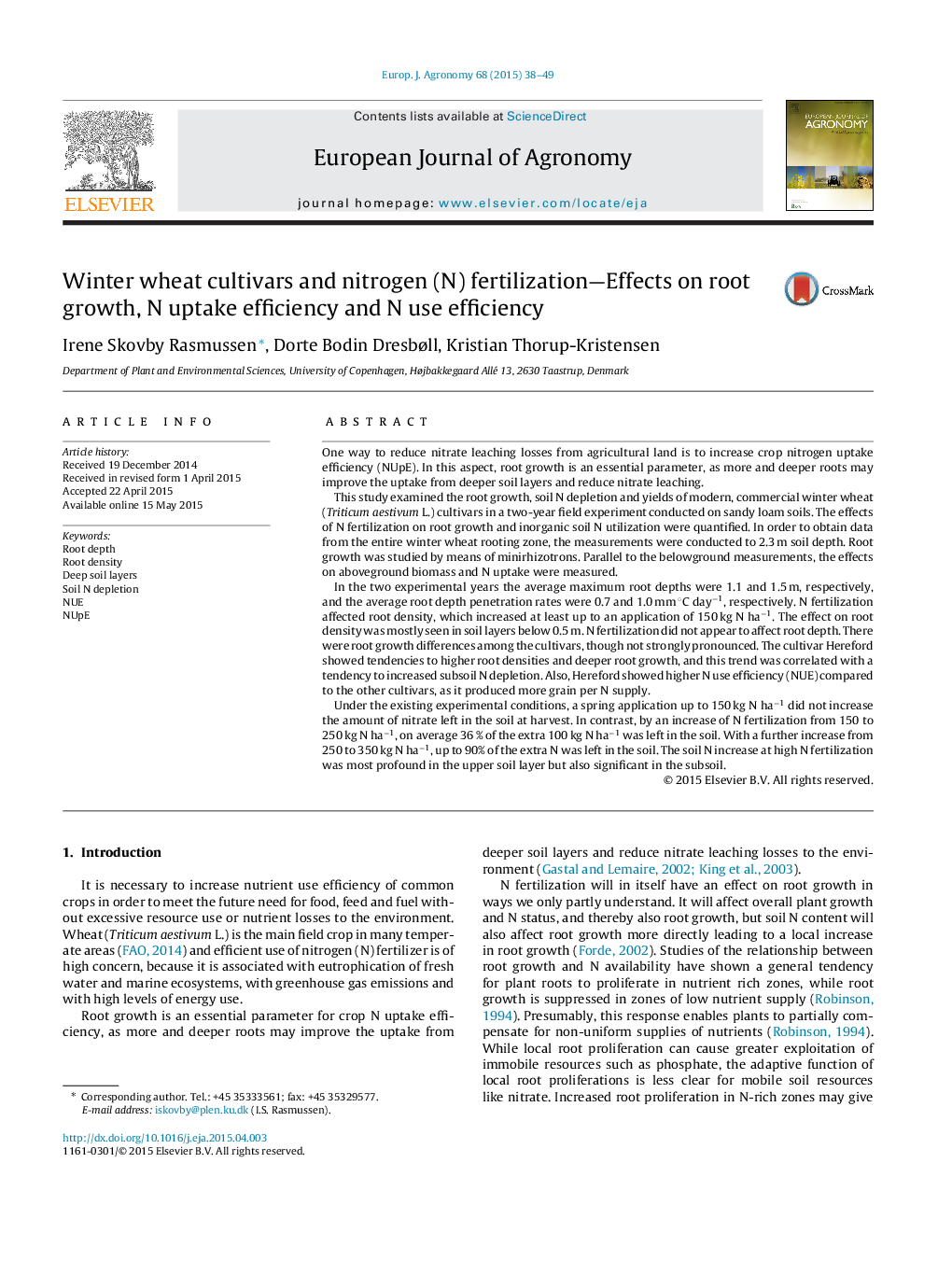| کد مقاله | کد نشریه | سال انتشار | مقاله انگلیسی | نسخه تمام متن |
|---|---|---|---|---|
| 6374270 | 1624457 | 2015 | 12 صفحه PDF | دانلود رایگان |

- N fertilization affected root density in layers below 0.5Â m, but not root depth.
- Root density increased at least up to an application of 150Â kg N haâ1.
- Cultivar root growth differences occurred, also in deep soil layers.
- Fertilization up to 150Â kg N haâ1 did not increase soil nitrate at harvest.
- High N fertilization rates increased soil N significantly in top- and subsoil.
One way to reduce nitrate leaching losses from agricultural land is to increase crop nitrogen uptake efficiency (NUpE). In this aspect, root growth is an essential parameter, as more and deeper roots may improve the uptake from deeper soil layers and reduce nitrate leaching.This study examined the root growth, soil N depletion and yields of modern, commercial winter wheat (Triticum aestivum L.) cultivars in a two-year field experiment conducted on sandy loam soils. The effects of N fertilization on root growth and inorganic soil N utilization were quantified. In order to obtain data from the entire winter wheat rooting zone, the measurements were conducted to 2.3 m soil depth. Root growth was studied by means of minirhizotrons. Parallel to the belowground measurements, the effects on aboveground biomass and N uptake were measured.In the two experimental years the average maximum root depths were 1.1 and 1.5 m, respectively, and the average root depth penetration rates were 0.7 and 1.0 mm °C dayâ1, respectively. N fertilization affected root density, which increased at least up to an application of 150 kg N haâ1. The effect on root density was mostly seen in soil layers below 0.5 m. N fertilization did not appear to affect root depth. There were root growth differences among the cultivars, though not strongly pronounced. The cultivar Hereford showed tendencies to higher root densities and deeper root growth, and this trend was correlated with a tendency to increased subsoil N depletion. Also, Hereford showed higher N use efficiency (NUE) compared to the other cultivars, as it produced more grain per N supply.Under the existing experimental conditions, a spring application up to 150 kg N haâ1 did not increase the amount of nitrate left in the soil at harvest. In contrast, by an increase of N fertilization from 150 to 250 kg N haâ1, on average 36 % of the extra 100 kg N haâ1 was left in the soil. With a further increase from 250 to 350 kg N haâ1, up to 90% of the extra N was left in the soil. The soil N increase at high N fertilization was most profound in the upper soil layer but also significant in the subsoil.
Journal: European Journal of Agronomy - Volume 68, August 2015, Pages 38-49